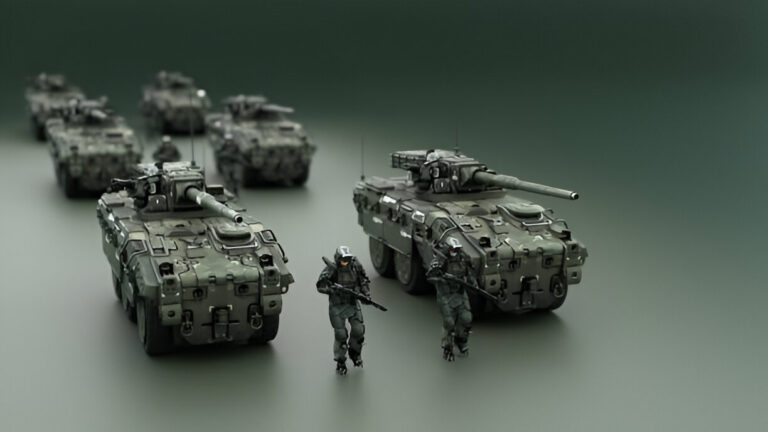In recent years, the realm of military simulation and training has seen a significant transformation, largely driven by advancements in technology. Among these advancements, 3D military models have emerged as a pivotal tool, enhancing various aspects of defense strategies, training methodologies, and operational planning. These models are not just visual aids; they serve a critical function in decision-making processes and strategic development.
What Are 3D Military Models?
3D models refer to digital representations of objects that are created using specialized software. In the military context, these models can depict a wide range of assets, including vehicles, aircraft, ships, and even entire terrains. The ability to visualize these elements in three dimensions allows military personnel to assess and analyze them more effectively than traditional 2D representations.
Applications in Training
One of the most significant applications of 3D military models is in training environments. Military personnel require realistic training scenarios to prepare for real-world situations. By utilizing military models, trainers can create immersive simulations that mimic actual combat conditions. This not only helps soldiers develop their tactical skills but also allows them to familiarize themselves with new equipment and strategies.
For instance, virtual reality (VR) training systems utilize 3D models to create lifelike scenarios where soldiers can practice maneuvers and engage in combat simulations without the risks associated with live training exercises. These immersive experiences enhance learning retention and prepare personnel for unexpected situations they may face on the battlefield.
Planning and Strategy Development
3D military models are also invaluable in operational planning and strategy development. Defense analysts can simulate various scenarios using these models to predict outcomes based on different tactics and approaches. By visualizing how units would interact in a 3D space, military planners can make informed decisions that enhance mission success rates.
Moreover, these models facilitate collaboration among different branches of the military. For example, when planning a joint operation involving the Army, Navy, and Air Force, 3D models enable all parties to visualize the entire operation in a cohesive manner, improving communication and coordination.
Enhancing Communication and Visualization
In addition to training and planning, 3D military models play a crucial role in enhancing communication among military stakeholders. Visualizing complex information can often be challenging when relying solely on verbal descriptions or 2D diagrams. By incorporating 3D models into presentations and briefings, military leaders can convey ideas more clearly and effectively.
For instance, during high-stakes briefings, 3D models can illustrate the geographical terrain, enemy positions, and troop movements, enabling decision-makers to grasp the situation quickly. This enhanced communication reduces the risk of misunderstandings and ensures that all participants are aligned on the strategic goals.
Future Prospects
As technology continues to advance, the future of 3D military models looks promising. Innovations in artificial intelligence and machine learning are set to enhance the capabilities of these models further. For example, AI algorithms could analyze data from simulations and provide insights into optimal tactics and strategies, allowing military leaders to make more informed decisions.
Moreover, with the integration of augmented reality (AR), military personnel may soon be able to interact with 3D models in real-time, overlaying crucial data onto their physical environment. This capability will revolutionize how training and operations are conducted, providing an even more immersive experience.
Conclusion
In summary, 3D military models are a cornerstone of modern military training, planning, and communication. Their ability to provide realistic, immersive experiences significantly enhances the effectiveness of training programs and operational planning processes. As technology continues to evolve, the role of 3D models in the military sector will undoubtedly expand, further transforming the way defense forces prepare for and engage in missions. The future of military operations is increasingly digital, and 3D military models are leading the way.
Click the link below to find out more!


